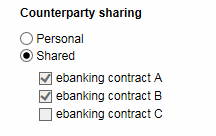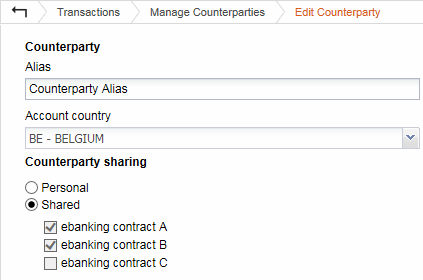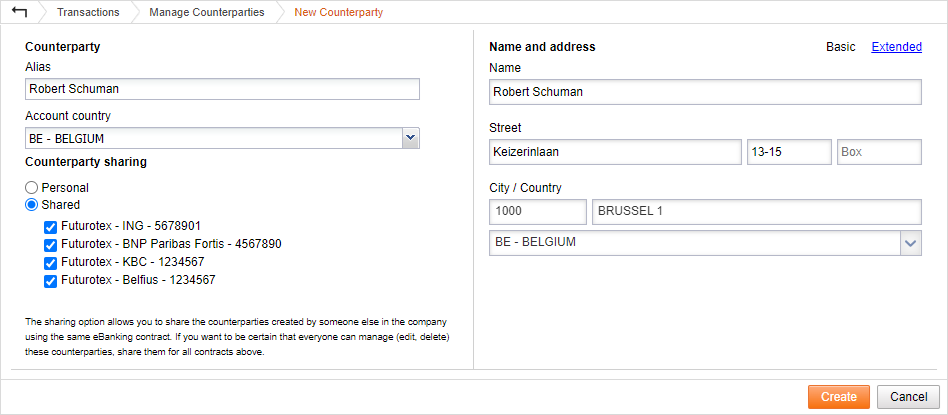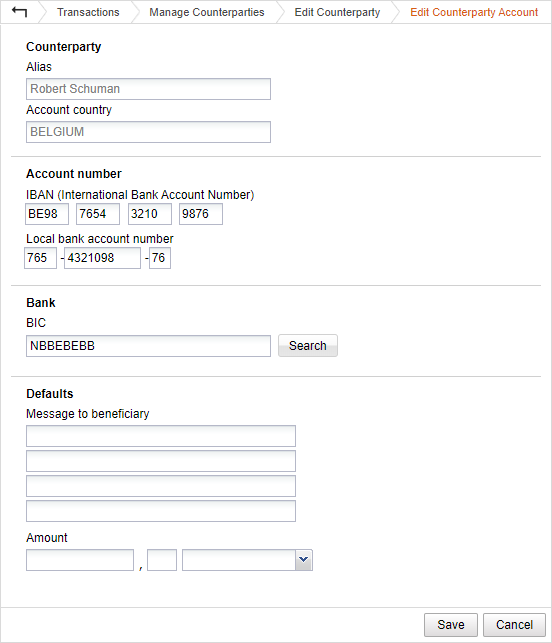
When sharing your counterparties, they will be made available for everybody in your Isabel subscription. Other colleagues will be able to create payments using your shared counterparties.
A lot of time can be saved if one of the users creates the counterparties and shares them with the others.

Example:
A subscription has 4 users and 3 bankcontracts (bank A, B and C).

In the search field in the top left of the window, you can search based on the name or alias of your counterparty.
To view the details, click on the row to open the counterparty.
TIP: The search can work with wildcards. Examples:
A single counterparty can have multiple account numbers, provided all account numbers are in the same country.

You can only add an account number on an existing counterparty. See Creating a new counterparty on how to create a counterparty.


one counterparty
all counterparties

Counterparty data cannot be transferred directly from Isabel 6 to other eBanking platforms (provided by partner banks such as Belfius, BNP Paribas Fortis, KBC, ING,...) or financial applications such as ERP software or accounting software packages.
There are however 2 ways to export the counterparty data from Isabel 6:
Please contact our Customer Care to request a transfer of your counterparties to another user. This can be to a user in the same Isabel subscription (e.g. caused by a replacement of a user) or another Isabel subscription (e.g. caused by a migration to another Isabel contract).
It is strongly advised to request this transfer before removing the original owner.
If you are unable to find your counterparty, verify if you can use it to create a payment. In case you are able to use the counterparty while creating a payment but you are unable to find the counterparty in counterparty management, the counterparty is most likely shared and you are not subscribed to MultiSign.
In case you want to perform changes to this counterparty, you can ask a user with MultiSign to perform the required changes.
This message is displayed if you have too many counterparties to display. Narrow your search criteria to find the counterparty you're looking for.
You are trying to remove a counterparty that is also shared by one of your colleagues with colleagues that don't have a direct connection with you. If you understand this risk, you can limit the access rights to personal in the details of the counterparty, and still remove the counterparty.